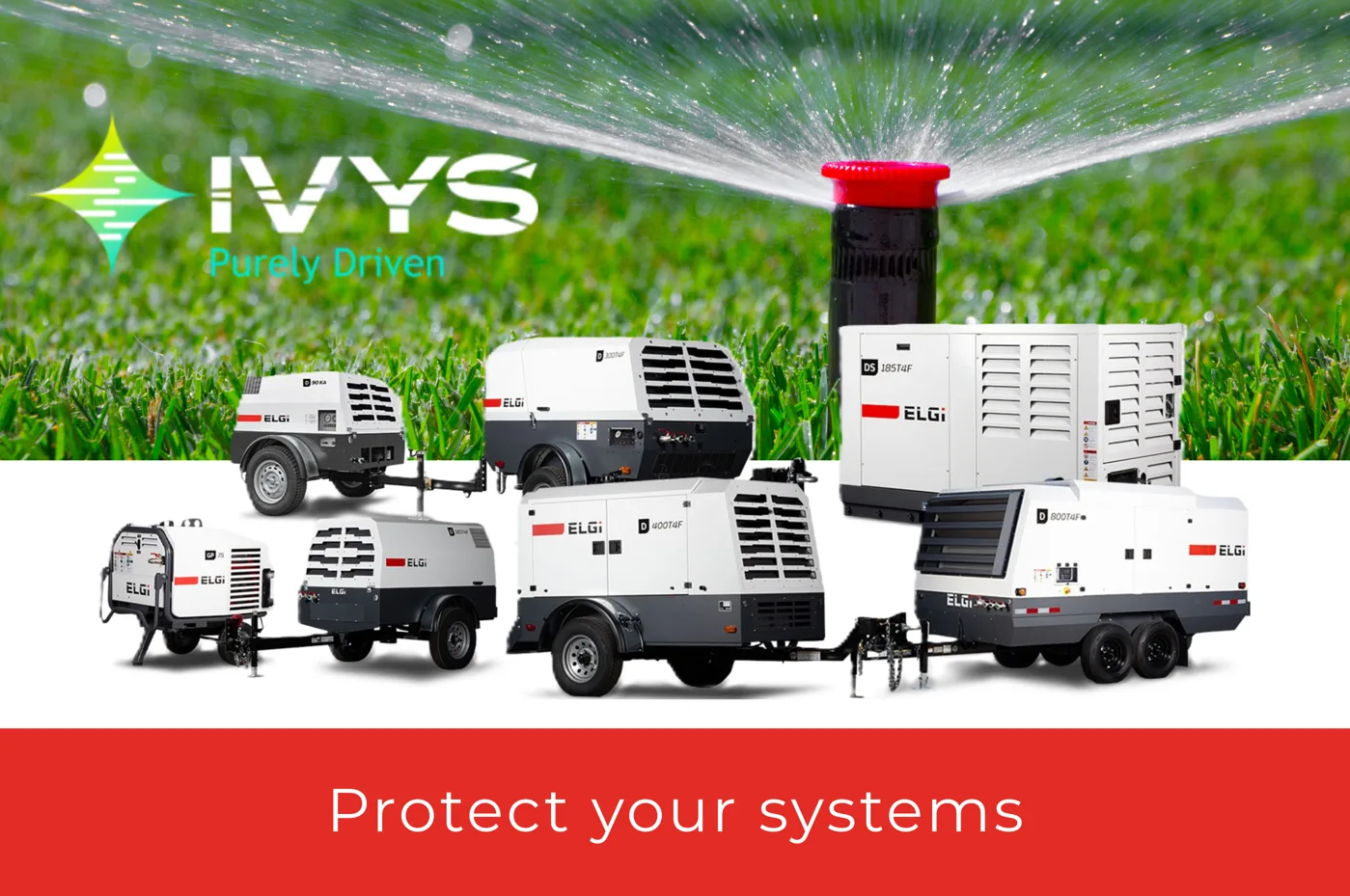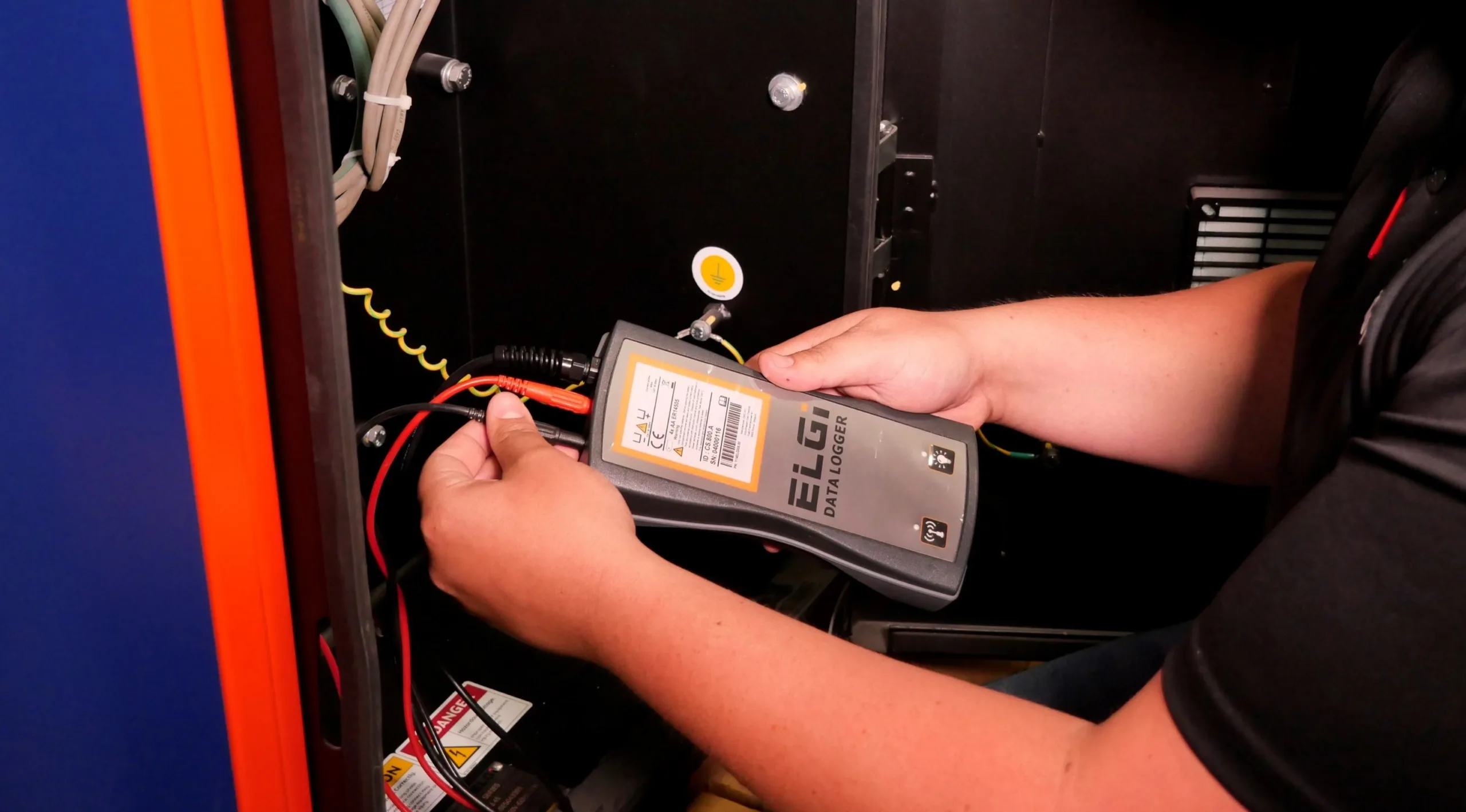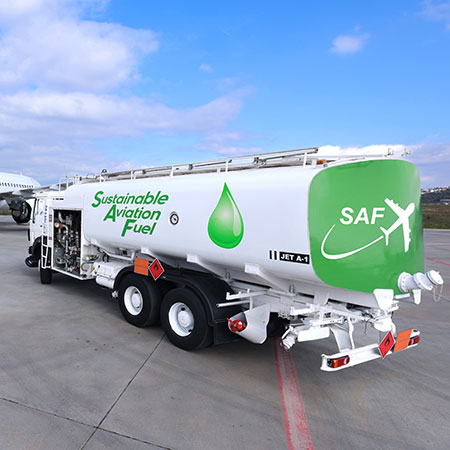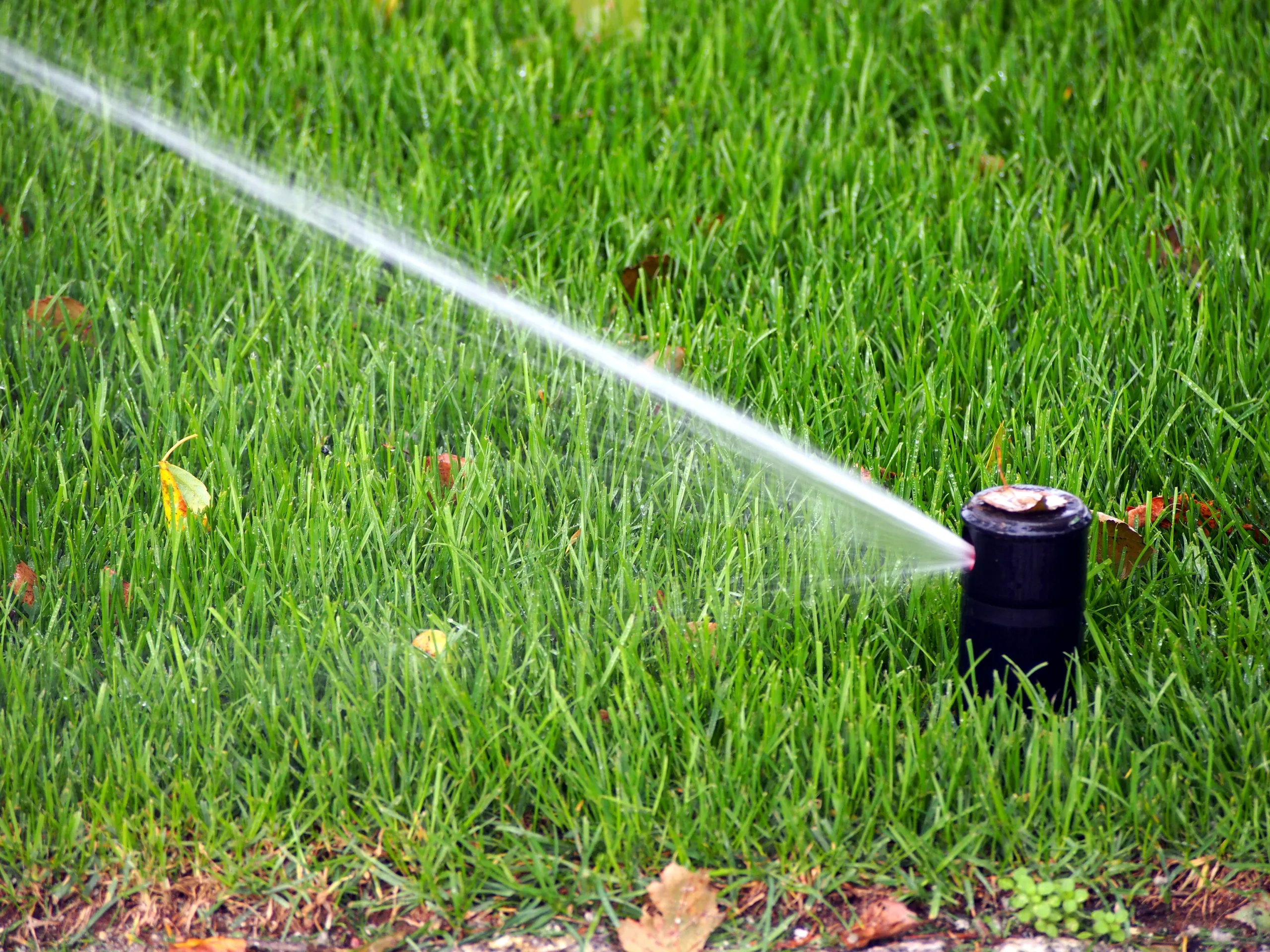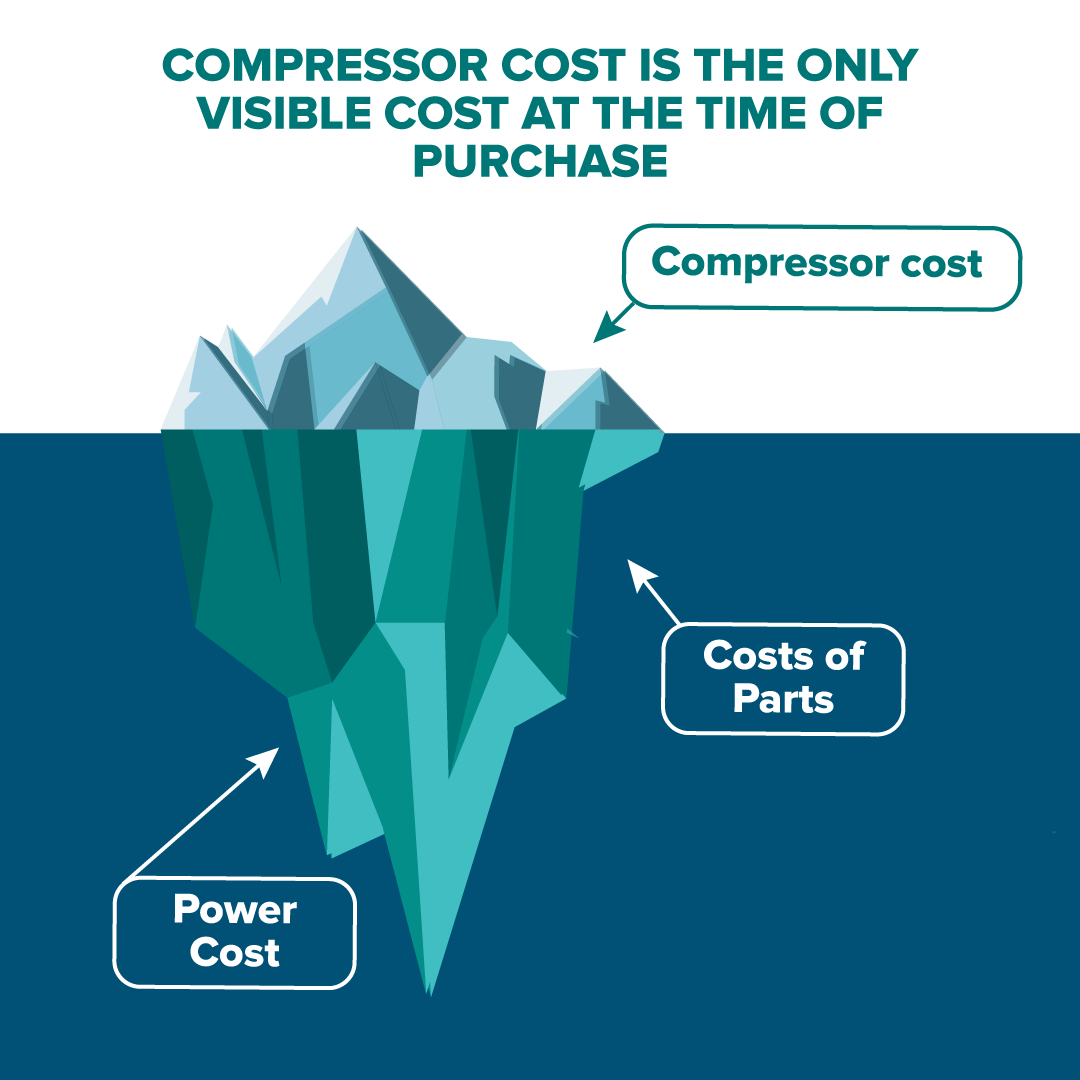Irrigation Blowout: A Critical Step in Winterizing Sprinkler Systems
The approach of autumn signals the start of the winterization season for landscape maintenance professionals and commercial property managers. The pneumatic purging of irrigation systems represents a critical preventive intervention that protects considerable investments in underground infrastructure.
The physical principle is simple: residual water in pipes expands by around 9% during freezing. This expansion generates forces sufficient to damage system components, particularly fittings, valves and sprinkler heads, leading to costly repairs in the spring.

Understanding pneumatic purging
The basic principle
Compressed air purging involves moving residual water through the pipe network using a controlled flow of air. This method evacuates water from horizontal sections, elbows and low points where it could stagnate and cause frost damage.
Critical point: fittings and components
While high-density polyethylene (HDPE) pipes can withstand repeated freeze-thaw cycles without permanent damage, connections and fittings are much more vulnerable and will probably fail. Valves, filters, plastic fittings and other components can easily burst if water freezes inside.
That’s why thorough, methodical purging is essential, even for systems using polyethylene, which is considered more frost-tolerant.
Purge technical parameters
Blowing pressure
Major irrigation equipment manufacturers set clear guidelines for pneumatic purging. Rain Bird recommends a pressure of 50 PSI, while Hunter Industries specifies that pressure should not exceed 50 PSI for polyethylene pipes or 80 PSI for PVC. The Ohio Irrigation Association also recommends setting the compressor between 50 and 80 PSI to avoid damaging the system.
Pressure must be maintained at a constant level throughout operation. Too little pressure will leave residual water; too much pressure may damage sensitive system components.
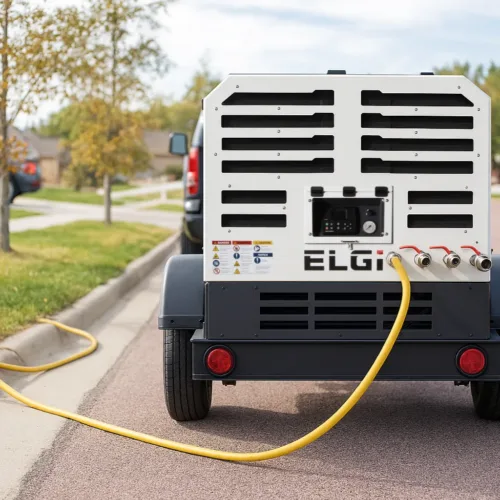
Air flow (CFM)
Air flow determines the actual efficiency of the purge. Most irrigation professionals recommend a minimum of 50 cubic feet per minute (CFM) for efficient work. Experts suggest compressors capable of delivering 20+ CFM at 50 PSI consistently for at least 5 minutes during use.
The air flow rate determines the actual efficiency of the purge. For a complete irrigation network, most professionals recommend a total of around 50 CFM for fast, even work. However, since most systems are purged zone by zone, a compressor capable of delivering at least 20 to 25 CFM at 50 PSI on a stable, continuous basis is usually sufficient.
The key is to guarantee a constant flow rate throughout the entire purging process – often 2 to 5 minutes per zone, depending on pipe length and diameter.
However, professionals often use large diesel or gasoline-powered compressors capable of discharging over 125 CFM of air, and can purge pipes as large as 3″ in diameter.
Continuity and operational efficiency
For professionals who need to process several properties a day, continuity of flow becomes a decisive economic factor. A compressor that requires frequent breaks considerably prolongs the intervention time at each site, reducing the number of customers that can be served during the short autumn window.
Mobile air compressors for commercial applications
Benefits of high-capacity air compressors
Although 20-50 CFM is the standard recommendation for basic residential applications, professionals managing varied customer portfolios use towable compressors producing higher CFMs and have learned to use them without damaging the system.
Higher-capacity compressors (75 CFM and over) offer several advantages for commercial work:
Increased operating efficiency
-
- Faster purging of each zone
- Ability to handle larger-diameter pipes
- Less waiting time between zones
- More properties treated per day
Versatile application
-
- Complex residential systems with many zones
- Commercial properties (buildings, golf courses, municipal parks)
- Sports facilities with extensive networks
- Industrial sites with large-diameter pipes
Reliability in the field
-
- Continuous flow without recovery cycles
- Stable performance regardless of operating time
- Reduced equipment breakdowns at the height of the season
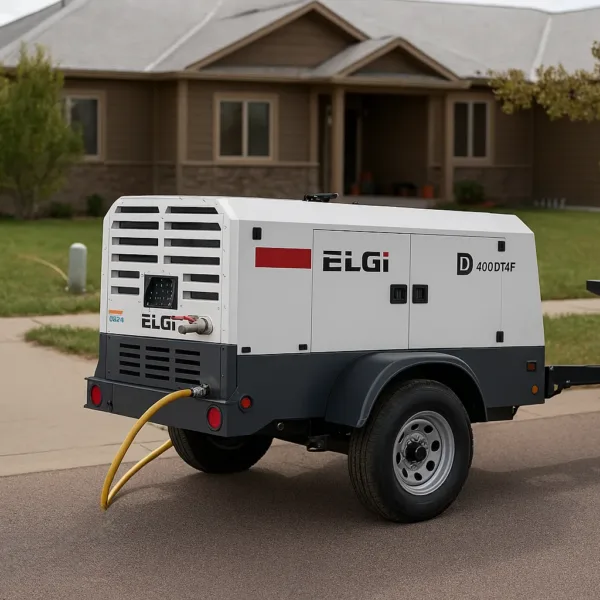
Diesel engines for professional use
Diesel-powered trailer-mounted compressors offer features tailored to professional requirements: complete energy autonomy, sustained power for continuous operation, easy mobility between customer sites, and robustness for intensive seasonal use.
Capacity range for commercial applications
Compressors in the 75 to 185 CFM range meet the following needs:
-
-
- 75-90 CFM: Multi-residential properties, small commercial complexes, high-end residences with extended systems
- 100-135 CFM: Medium-sized commercial sites, municipal parks, community sports fields
- 150-185 CFM: Large commercial sites, professional sports facilities, institutional campuses
-
This range enables professionals to serve a diverse clientele with a single, versatile piece of equipment.
Professional methodology
Préparation et inspection
Prior to pneumatic intervention, a visual inspection will identify damaged heads, apparent leaks, areas requiring special attention and system configuration. Before any compressed air is introduced, the main supply must be completely shut off, and critical components (filters, regulators) drained.
Intervention sequence
Purging is carried out zone by zone, generally from the furthest zone to the nearest:
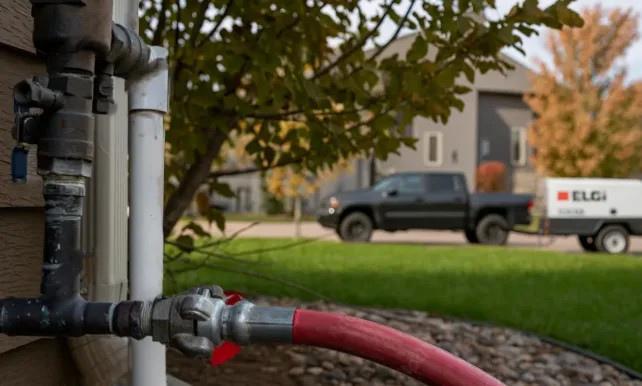
- Close main watering valve.
- Release pressure by activating the furthest circuit.
- Attach compressor to purge adapter.
- Set pressure regulator to 50 PSI maximum.
- Start compressor and gradually increase flow rate until heads emerge.
- Watch for abnormal behavior (unusual noises, excess pressure, irregular spraying).
- DO NOT purge a circuit for more than 2 minutes at a time.
- Move on to the next zone and repeat the cycle (2 or more times per zone) until only a fine mist is obtained.
- Leave a zone active by closing the compressor.
- Disconnect compressor.
- Switch off programmer.
Successful purging is characterized by the gradual build-up of a uniform jet of air, preceded by a fine mist after 30 seconds of continuous blowing, and automatic retraction of the retractable heads.
Mistakes to avoid
Once the residual water has been evacuated, there’s no point, and indeed no risk, in continuing to blow.
In the absence of water, compressed air flows at high speed, causing frictional heating in plastic pipes.
Manufacturers recommend limiting blowing (into dry hoses in the absence of water droplets) to 30 – 45 seconds per zone, even if it means repeating a short purge if necessary, rather than maintaining a continuous jet for too long.
Poorly controlled pressure: Excessive pressure causes invisible microcracks that weaken components. Insufficient pressure leaves residual water in the lower sections.
Undersized equipment: A compressor with insufficient capacity creates the false impression of complete purging. Residual water concentrated in certain sections becomes a problem during freezing.
Incomplete purging: Frequent interruptions allow water to be redistributed in the system, compromising the effectiveness of the intervention.
Considerations for professionals
Profitability and sales volume
The ability to efficiently handle a larger number of properties during the fall window is directly dependent on equipment performance. A high-capacity compressor means shorter intervention times per site, more contracts accepted during the season, a more diversified customer base and improved customer satisfaction.
Equipment durability
Compressors designed for professional applications offer the robustness needed for intensive seasonal use. The 175 CFM class compressors are the type used by road crews to power jackhammers, testifying to their robust construction.
Service quality
Reliable, high-performance equipment means fewer service returns, a stronger professional reputation, customer loyalty and organic growth for the company.
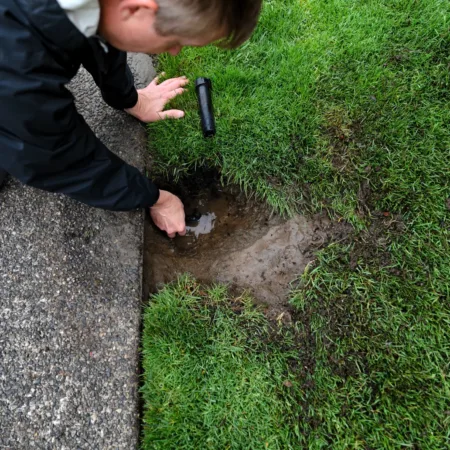
The Ivys Solution
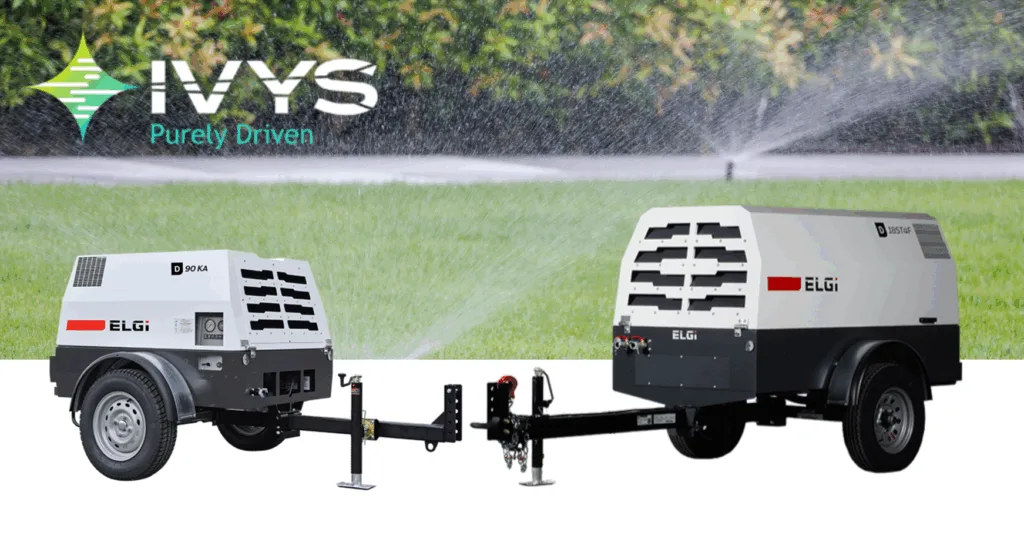
At Ivys, we understand the unique requirements of landscape maintenance professionals in Ontario and Quebec. Our range of ELGi mobile compressors, from 75 to 185 CFM, has been specifically selected to meet the needs of commercial winterization.
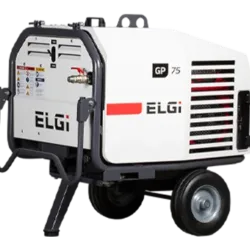
These towable units offer :
- Constant flow, guaranteeing efficient purging without interruption
- A diesel engine adapted to autumn weather conditions
- Proven robustness for intensive seasonal use
- Versatility to serve both residential and commercial customers
Whether you manage a portfolio of high-end residences, multi-residential complexes or commercial facilities, our compressors enable you to maximize your operational efficiency and profitability during the short winterization season.
For landscape maintenance professionals and specialized irrigation contractors, the choice of mobile compressor represents a strategic decision that directly influences the operational efficiency and profitability of winterization activities.
High-capacity compressors, particularly in the 75 to 185 CFM range, offer the combination of power, continuity and mobility required to efficiently serve a diverse commercial clientele. Their ability to maintain a consistently high flow rate means that each property can be treated rapidly, maximizing the number of interventions possible during the short autumn season.
Faced with the demands of the Ontario and Quebec commercial markets, where installations vary considerably in size and complexity, versatile, high-performance equipment is a fundamental investment for any company aspiring to position itself as a professional supplier of irrigation system winterization services.
To find out which ELGi mobile compressor is right for your specific needs and optimize your winterization season, contact our experts at Ivys.
